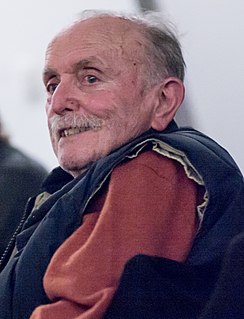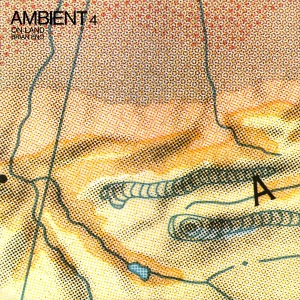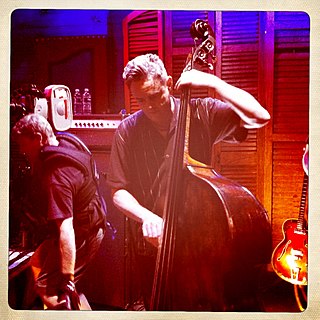Noise music is a genre of music that is characterised by the expressive use of noise within a musical context. This type of music tends to challenge the distinction that is made in conventional musical practices between musical and non-musical sound. Noise music includes a wide range of musical styles and sound-based creative practices that feature noise as a primary aspect.

Jon Hassell was an American trumpet player and composer. He was best known for developing the concept of "Fourth World" music, which describes a "unified primitive/futurist sound" combining elements of various world ethnic traditions with modern electronic techniques. The concept was first articulated on Fourth World, Vol. 1: Possible Musics, his 1980 collaboration with Brian Eno.

Alvin Augustus Lucier Jr. was an American composer of experimental music and sound installations that explore acoustic phenomena and auditory perception. A long-time music professor at Wesleyan University in Middletown, Connecticut, Lucier was a member of the influential Sonic Arts Union, which included Robert Ashley, David Behrman, and Gordon Mumma. Much of his work is influenced by science and explores the physical properties of sound itself: resonance of spaces, phase interference between closely tuned pitches, and the transmission of sound through physical media.
Laurie Spiegel is an American composer. She has worked at Bell Laboratories, in computer graphics, and is known primarily for her electronic-music compositions and her algorithmic composition software Music Mouse. She also plays the guitar and lute.
Electro is a genre of electronic music and early hip hop directly influenced by the use of the Roland TR-808 drum machines, and funk. Records in the genre typically feature drum machines and heavy electronic sounds, usually without vocals, although if vocals are present they are delivered in a deadpan manner, often through electronic distortion such as vocoding and talkboxing. This is the main distinction between electro and previously prominent genres such as disco, in which the electronic sound was only part of the instrumentation. It also palpably deviates from its predecessor boogie for being less vocal-oriented and more focused on electronic beats produced by drum machines.
Dark ambient is a genre of post-industrial music that features an ominous, dark droning and often gloomy, monumental or catacombal atmosphere, partially with discordant overtones. It shows similarities with ambient music, a genre that has been cited as a main influence by many dark ambient artists, both conceptually and compositionally. Although mostly electronically generated, dark ambient also includes the sampling of hand-played instruments and semi-acoustic recording procedures, and is strongly related to ritual industrial music.

Ambient 4: On Land is the eighth solo studio album by British ambient musician Brian Eno. It was the final edition in Eno's ambient series, which began in 1978 with Music for Airports.

Steve J. Morse is an American guitarist, best known as the founder of the Dixie Dregs and as the lead guitarist of Deep Purple from 1994 to 2022. Morse has also enjoyed a successful solo career and was briefly a member of the group Kansas in the mid-1980s. Most recently, Morse became a member of the supergroup Flying Colors.

Patrick John O'Hearn is an American multi-instrumentalist, composer, and recording artist.

The Nurse with Wound list is a list of musicians and bands that was included with Chance Meeting on a Dissecting Table of a Sewing Machine and an Umbrella (1979), the first album by Nurse with Wound. There are 291 entries on the list. The list was expanded with Nurse with Wound's second album, To the Quiet Men from a Tiny Girl (1980).
Alvin 'GG' Ranglin is a Jamaican reggae singer, record producer and record label owner.
Ohm is a unit of electrical resistance named after Georg Ohm.
Dance-rock is a disco/dance-infused genre of rock music. It is a post-disco genre connected with pop rock and post-punk with fewer rhythm and blues influences. It originated in the early 1980s, following the decline in popularity of both punk and disco.
Loop Guru is a worldbeat group consisting of bassist/guitarist Salman Gita and programmer Jamuud. They first met around 1980 and initially played together in The Transmitters and released their debut single as Loop Guru, "Shrine", in 1992. The band's music is a melange of Asian and Western music, infusing Western dance beats with the rich textures and sounds of Indonesian gamelan and traditional Indian music. Heavy emphasis is placed on electronic samples of traditional instruments, voices, and miscellaneous sounds.
German electronic music is a broad musical genre encompassing specific styles such as Electroclash, trance, krautrock and schranz. It is widely considered to have emerged in the late 1960s and early 1970s, becoming increasingly popular in subsequent decades. Originally minimalistic style of electronic music developed into psychedelic and prog rock aspects, techno and electronic dance music. Notable artists include Kraftwerk, Can, Tangerine Dream and Deutsch Amerikanische Freundschaft. German electronic music contributed to a global transition of electronic music from underground art to an international phenomenon, with festivals such as Love Parade, Winterworld and MayDay gaining prominence alongside raves and clubs.

Historical classical music recordings are generally classical music recordings made prior to the stereo era of vinyl disc recording, which began around 1957.
Marcio Alvarado, better known by his stage name Alvin Risk, is an American electronic music producer, singer and DJ from Washington, D.C., United States. He has released music on Owsla, Dim Mak, and Ministry of Sound. He has also released under the label Memory LTD. Risk is the brother of Painted Face, singer and producer Allie Alvarado. Alvin Risk was on the radio show DVDASA on January 15, 2014.
City pop is a loosely defined form of Japanese pop music that emerged in the late 1970s and peaked in the 1980s. It was originally termed as an offshoot of Japan's Western-influenced "new music", but came to include a wide range of styles – including AOR, soft rock, R&B, funk, and boogie – that were associated with the country's nascent economic boom and leisure class. It was also identified with new technologies such as the Walkman, cars with built-in cassette decks and FM stereos, and various electronic musical instruments.
Alvin Taylor is an American drummer, producer and musical director, who is best known for his work with Elton John, Eric Burdon, George Harrison, Billy Preston and Bob Welch.







